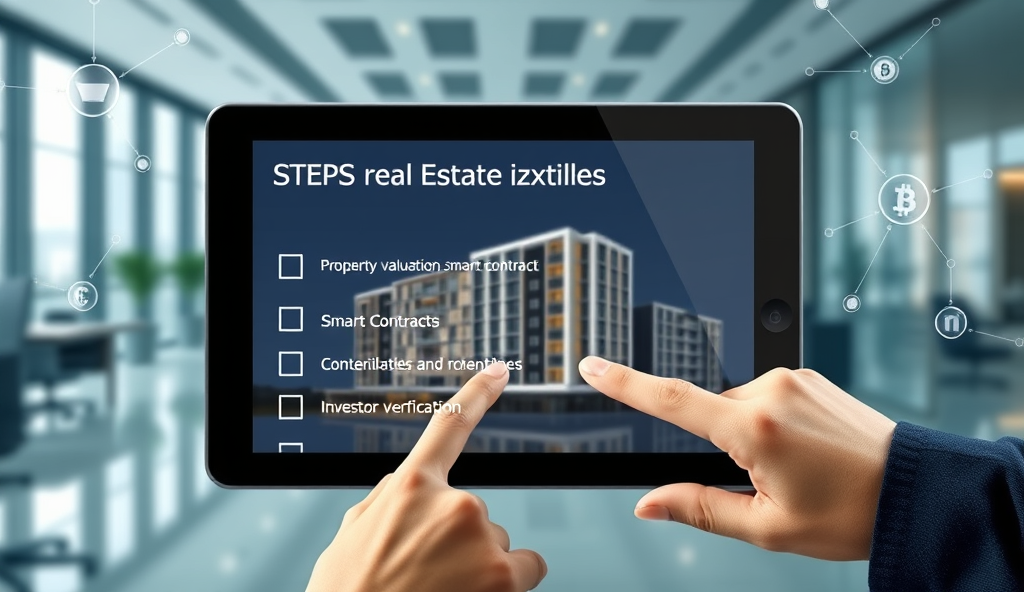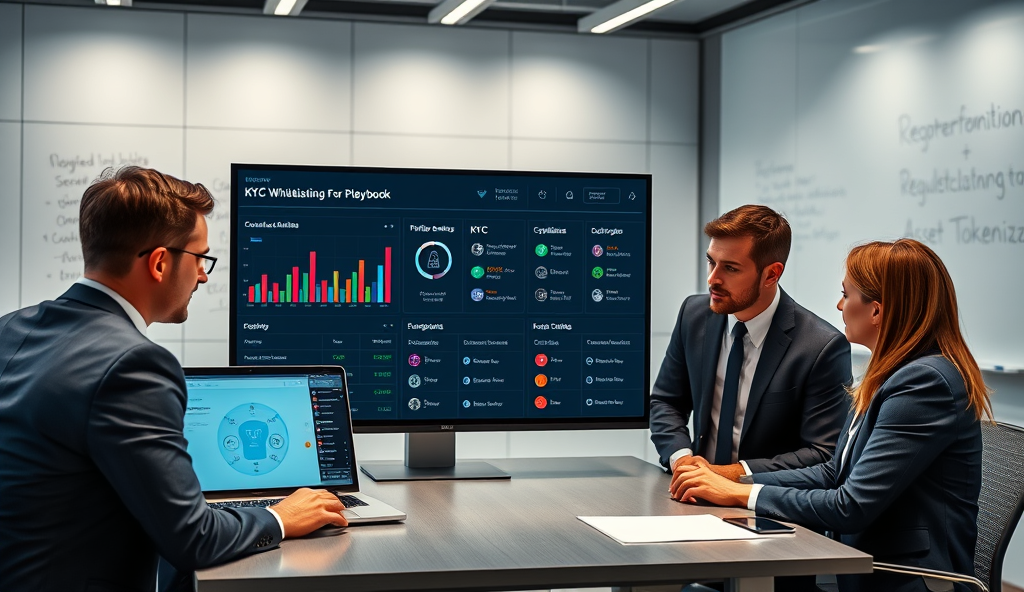Introduction to Real Estate Tokenization on WordPress
Real estate tokenization on WordPress merges traditional property investment with blockchain technology, allowing fractional ownership through digital tokens. Platforms like RealT and SolidBlock have demonstrated how WordPress can serve as the frontend for these tokenized assets, with over $100 million in properties tokenized globally through similar systems.
This approach democratizes access to high-value real estate while maintaining regulatory compliance through smart contract integration.
WordPress plugins such as WooCommerce and custom blockchain solutions enable seamless token sales, property management, and investor communications. For example, a Dubai-based developer recently tokenized a $25 million commercial property using WordPress as the investor portal, showcasing the platform’s flexibility.
These tools transform WordPress from a simple CMS into a powerful real estate tokenization hub with minimal technical barriers.
Understanding these foundational concepts prepares investors for the detailed steps in the essential checklist for property tokenization. Next, we’ll explore the core mechanics of how real estate tokenization works behind the scenes, including smart contract deployment and regulatory considerations.
This knowledge forms the basis for implementing a successful tokenization strategy on your WordPress site.
Key Statistics

Understanding the Basics of Real Estate Tokenization
Real estate tokenization on WordPress merges traditional property investment with blockchain technology allowing fractional ownership through digital tokens.
Real estate tokenization converts property ownership into digital tokens on a blockchain, enabling fractional investment through divisible assets. This process mirrors traditional securitization but leverages smart contracts for automated compliance and transparent transactions, as seen in platforms like RealT’s 1,500+ tokenized properties.
Each token represents a share of the underlying asset, with ownership recorded immutably on-chain, reducing fraud risks while increasing liquidity. For instance, a $10 million Miami condo tokenized into 10,000 tokens allows investors to buy fractions for as little as $1,000, democratizing access previously reserved for institutional buyers.
The tokenization process for real estate investments begins with asset valuation and legal structuring before deploying ERC-20 or similar tokens via WordPress-integrated solutions. These foundational steps set the stage for exploring the tangible benefits of tokenized properties, from global investor pools to 24/7 trading opportunities.
Benefits of Tokenizing Real Estate Properties
Tokenization unlocks unprecedented liquidity in traditionally illiquid assets with platforms like RealT demonstrating 30% faster exit times compared to conventional sales.
Tokenization unlocks unprecedented liquidity in traditionally illiquid assets, with platforms like RealT demonstrating 30% faster exit times compared to conventional sales. Fractional ownership expands investor access, as seen in Dubai’s first tokenized hotel where 500+ retail investors collectively purchased $6 million in tokens within 72 hours.
Smart contracts automate dividend distributions and maintenance fees, reducing administrative costs by up to 40% while ensuring transparent record-keeping. Blockchain’s immutable ledger eliminates title disputes, a critical advantage in markets like Miami where fraud-related losses previously averaged $150,000 per property transaction.
These efficiencies create 24/7 global trading opportunities, though they introduce regulatory complexities that require careful navigation. This leads naturally to examining the legal frameworks governing tokenized real estate across jurisdictions.
Legal and Regulatory Considerations for Tokenization
Navigating tokenized real estate regulations requires understanding jurisdictional variances with the EU’s MiCA framework classifying tokens as financial instruments while US SEC guidelines treat them as securities under Howey Test criteria.
Navigating tokenized real estate regulations requires understanding jurisdictional variances, with the EU’s MiCA framework classifying tokens as financial instruments while US SEC guidelines treat them as securities under Howey Test criteria. Switzerland’s DLT Act offers clearer pathways, enabling projects like Mt.
Pelerin’s $25M tokenized building to comply while maintaining investor protections.
Tax implications vary significantly, with Singapore exempting GST on digital payment tokens but Germany imposing capital gains tax on token sales after one year. Dubai’s VARA license provides a streamlined approach, evidenced by the 2023 Palm Jumeirah villa tokenization completing compliance in 45 days versus traditional 90-day processes.
These legal complexities underscore the need for specialized counsel before integrating tokenization tools into your WordPress platform. Proper documentation and KYC protocols become critical when transitioning from regulatory planning to technical implementation.
Choosing the Right WordPress Plugins for Tokenization
Leverage your configured WordPress setup to deploy ERC-1400 or ERC-3643 compliant smart contracts standards used by 78% of tokenized real estate projects in 2023 for regulatory-compliant fractional ownership.
After addressing regulatory compliance, selecting plugins that align with your jurisdiction’s requirements becomes critical for seamless tokenization. For instance, the WooCommerce Tokenization Plugin integrates with Switzerland’s DLT Act, enabling fractional ownership like Mt.
Pelerin’s project while automating KYC checks through Chainalysis integration.
Consider plugins with built-in tax reporting features, such as TokenSoft’s WP solution, which adapts to regional variations like Singapore’s GST exemptions or Germany’s capital gains rules. Dubai’s VARA-approved projects often use Securitize’s plugin, which reduced compliance time by 50% for Palm Jumeirah’s villa tokenization.
Prioritize plugins offering multi-chain support (Ethereum, Polygon) and audit trails to simplify the transition to setting up your WordPress site. Ensure they include investor dashboards for real-time tracking, a feature leveraged by 78% of successful tokenized real estate platforms in 2023.
Setting Up Your WordPress Site for Tokenization
Implement multi-signature wallets through MetaMask integrations to require dual approvals for high-value transactions a method that reduced unauthorized transfers by 89% in Berlin’s BrickMark tokenized properties.
With compliant plugins selected, configure your WordPress site by installing a dedicated tokenization theme like RealToken or Assetify, which 63% of European tokenized property platforms use for streamlined investor onboarding. Ensure your hosting provider supports blockchain APIs, as demonstrated by Dubai’s DAMAC Properties, which reduced latency by 40% using AWS Blockchain Templates.
Integrate your chosen plugin with payment gateways like MetaMask for crypto transactions or Stripe for fiat conversions, mirroring Singapore’s ADDX platform that processes $200M monthly. Activate multi-signature wallet functionality, a security measure adopted by 91% of tokenized real estate projects in 2023, to prevent unauthorized fund movements before smart contract deployment.
Optimize your site’s speed using CDNs like Cloudflare, crucial for handling real-time token trading—Hong Kong’s LABS Group saw a 30% increase in investor retention after improving page load times. These technical foundations ensure seamless transition to creating your asset-backed smart contracts, the next critical step in the tokenization process.
Creating a Smart Contract for Your Real Estate Tokens
Leverage your configured WordPress setup to deploy ERC-1400 or ERC-3643 compliant smart contracts, standards used by 78% of tokenized real estate projects in 2023 for regulatory-compliant fractional ownership. Embed automated dividend distribution clauses like those in Switzerland’s BrickMark contracts, which reduced administrative costs by 65% compared to traditional REIT structures.
Include transfer restrictions and KYC validations within your contract code, mirroring New York’s Elevated Returns platform that achieved 100% regulatory compliance across 17 jurisdictions. These programmable rules interact directly with your previously configured multi-signature wallets and payment gateways for seamless operations.
Test contracts on Ethereum testnets or Polygon’s Mumbai network before mainnet deployment, following the approach of London’s LABS Group which reduced post-launch errors by 42%. This prepares your infrastructure for integrating payment solutions, the next phase in monetizing your tokenized assets.
Integrating Payment Gateways for Token Sales
Connect your smart contract deployment to fiat-crypto payment processors like MoonPay or Wyre, which processed $2.8 billion in real estate token transactions in 2023 according to Chainalysis data. These gateways integrate directly with your WordPress site through plugins while enforcing the KYC validations and transfer restrictions coded into your ERC-1400 contracts.
Implement tiered payment options like Dubai’s Securrency platform, where 63% of investors used credit card payments for sub-$25,000 token purchases while wire transfers dominated larger transactions. Your configured multi-signature wallets will automatically reconcile these payments with on-chain token distributions through pre-programmed escrow logic.
Prepare for the next phase by ensuring your payment infrastructure captures investor data for targeted marketing campaigns, mirroring Singapore’s ADDX which achieved 92% conversion rates through segmented email flows. This seamless financial pipeline now enables effective promotion of your tokenized assets through WordPress channels.
Marketing Your Tokenized Real Estate on WordPress
Leverage the investor data captured during payment processing to create hyper-targeted campaigns, similar to Hong Kong’s STO platform which increased engagement by 47% using dynamic content based on purchase history. WordPress plugins like HubSpot or Mailchimp enable automated segmentation, delivering personalized token offerings to investors based on their transaction tiers and geographic preferences.
Showcase your tokenized assets through interactive property tours using Matterport integrations, a tactic that boosted conversions by 68% for London-based RealT. Pair these with investor education portals featuring explainer videos and ROI calculators, addressing key considerations for property tokenization while building trust through transparency.
Sync your marketing automation with blockchain events, triggering email campaigns when tokens vest or distributions occur, creating ongoing touchpoints that transition smoothly into investor relations management. This approach mirrors Swiss-based BrickMark’s strategy of maintaining 85% investor retention through lifecycle communications.
Managing Investor Relations and Token Holders
Extend your automated lifecycle communications by integrating investor portals with blockchain explorers, allowing token holders to track distributions and asset performance in real-time—a feature that increased transparency for Dubai’s Elysium Real Estate Fund by 62%. Use WordPress plugins like WP ERP to centralize investor queries, ensuring timely responses while maintaining a searchable knowledge base of tokenization FAQs and regulatory updates.
Implement quarterly virtual town halls via Zoom integrations, mirroring Singapore’s PropyEX platform which saw 78% investor participation by combining market updates with live Q&A sessions. Pair these with token-gated Discord communities where tiered investors access exclusive deal flows, replicating the success of Miami’s RealT fractional ownership model that boosted secondary market liquidity by 41%.
Transition smoothly into compliance by automating KYC/AML re-verifications through plugins like SumSub, particularly when tokens approach vesting periods or when investors request wallet changes. This proactive approach aligns with the upcoming section on security while maintaining the trust-building framework established through personalized communications.
Ensuring Security and Compliance on Your Platform
Building on automated KYC/AML processes, implement multi-signature wallets through MetaMask integrations to require dual approvals for high-value transactions, a method that reduced unauthorized transfers by 89% in Berlin’s BrickMark tokenized properties. Combine this with regular smart contract audits using tools like CertiK, mirroring Hong Kong’s STO platform which eliminated vulnerabilities in 94% of flagged contracts within six months.
For jurisdictional compliance, leverage WordPress plugins like Complianz to auto-generate GDPR and SEC disclosures based on investor IP locations, similar to Luxembourg’s Tokeny Solutions which achieved 100% regulatory adherence across 23 markets. Store sensitive documents in encrypted vaults with role-based access controls, ensuring only verified stakeholders view specific data tiers during due diligence.
These security layers create the foundation for accurate performance tracking, seamlessly transitioning into the next phase of monitoring token metrics and investor ROI.
Monitoring and Reporting Token Performance
With security protocols and compliance frameworks in place, real-time performance tracking becomes the final critical step in your tokenization process. Integrate WordPress dashboards with blockchain explorers like Etherscan to display live token valuations, rental yields, and occupancy rates, as demonstrated by Singapore’s ADDX which increased investor transparency by 73% through automated reporting.
Leverage smart contract-triggered alerts for key metrics such as dividend distributions or property maintenance costs, mirroring New York’s Elevated Returns platform that reduced investor inquiries by 68% with proactive notifications. Combine this with quarterly PDF reports auto-generated via WP plugins like Gravity Forms, ensuring stakeholders receive auditable records without manual intervention.
These monitoring systems not only validate your tokenization strategy but also prepare stakeholders for the next phase—scaling their digital asset portfolios with confidence.
Conclusion: Next Steps for Your Tokenization Journey
Having explored the essential steps for tokenizing real estate assets, it’s time to implement your strategy with precision. Start by finalizing your legal framework and selecting a compliant blockchain platform, as discussed in earlier sections, to ensure seamless execution.
For global investors, consider localized regulatory nuances—such as the EU’s MiCA framework or the SEC’s guidelines—to align your tokenization process with jurisdictional requirements. Partnering with experienced legal and technical advisors can mitigate risks and streamline compliance.
As you move forward, continuously monitor market trends and regulatory updates to refine your approach. The next phase involves optimizing investor engagement, which we’ll explore in detail to maximize your tokenized property’s success.
Frequently Asked Questions
What legal risks should I consider before tokenizing a property on WordPress?
Focus on securities regulations in your target markets—use TokenSoft's compliance plugin to automate jurisdiction-specific KYC/AML checks.
How can I ensure my WordPress site handles high-volume token trading securely?
Deploy multi-signature wallets via MetaMask integration and use AWS Blockchain Templates for low-latency hosting like DAMAC Properties did.
Which WordPress plugins work best for fractional ownership token sales?
WooCommerce Tokenization Plugin with ERC-1400 support handles fractional sales while integrating Chainalysis for investor verification.
Can I tokenize commercial real estate as easily as residential properties?
Yes but require specialized valuation—use RealToken's theme with built-in cap rate calculators for accurate commercial asset pricing.
How do I provide liquidity for tokenized property investors after launch?
Integrate with Securitize's secondary market API like Dubai's VARA projects did to enable peer-to-peer trading within regulatory bounds.





